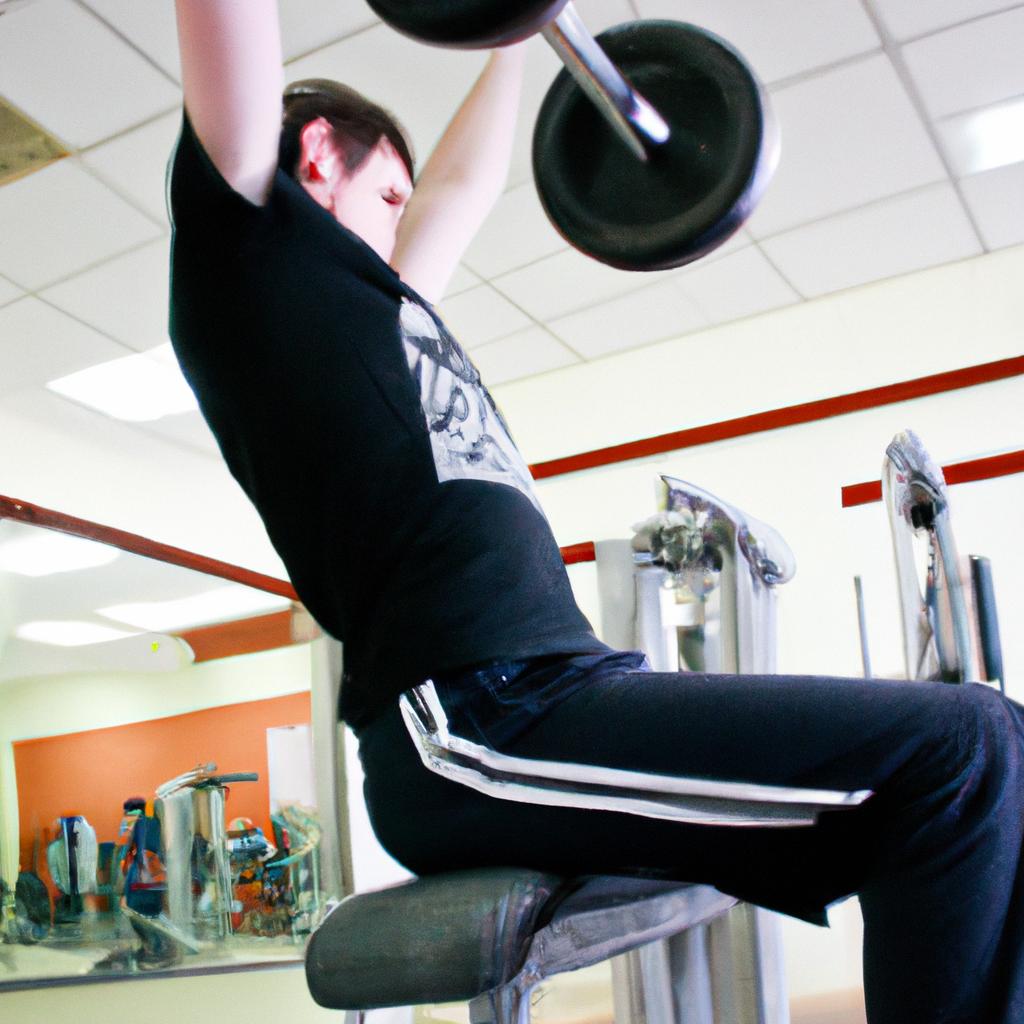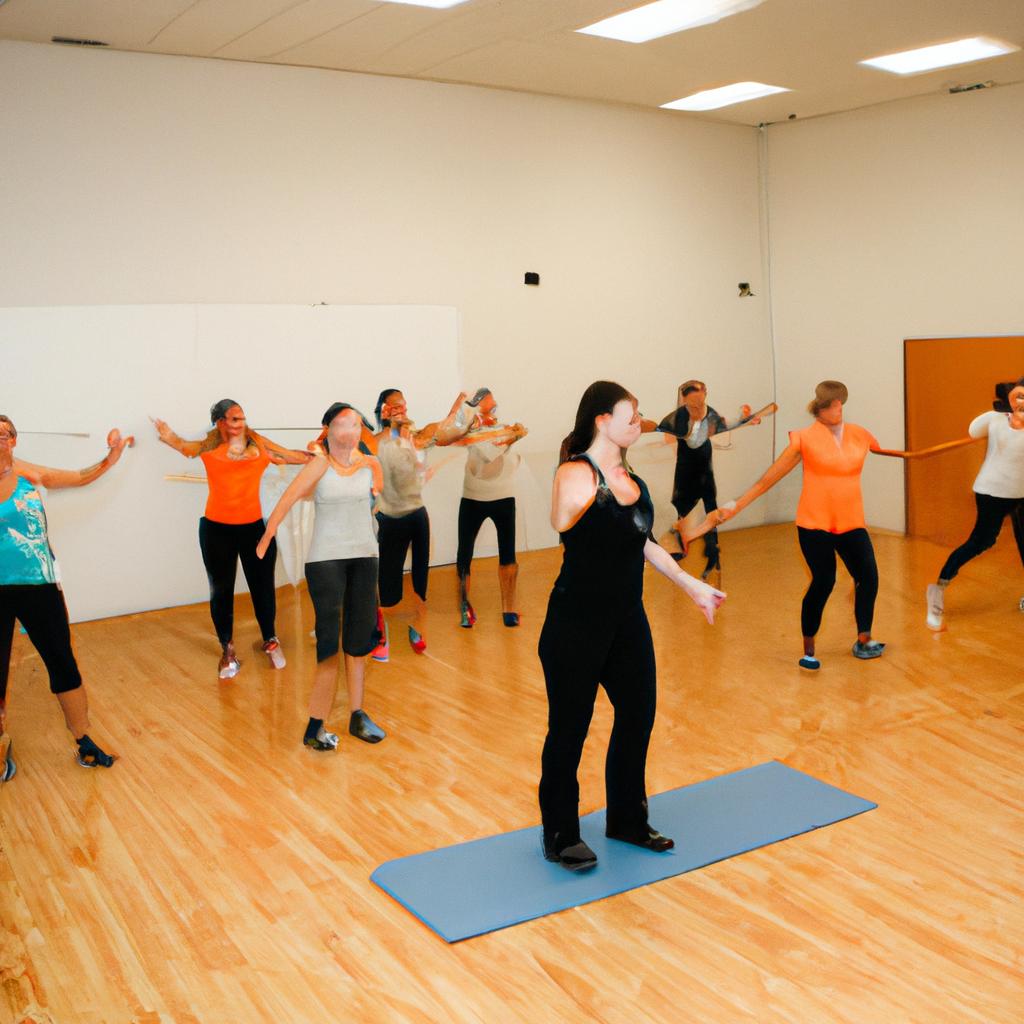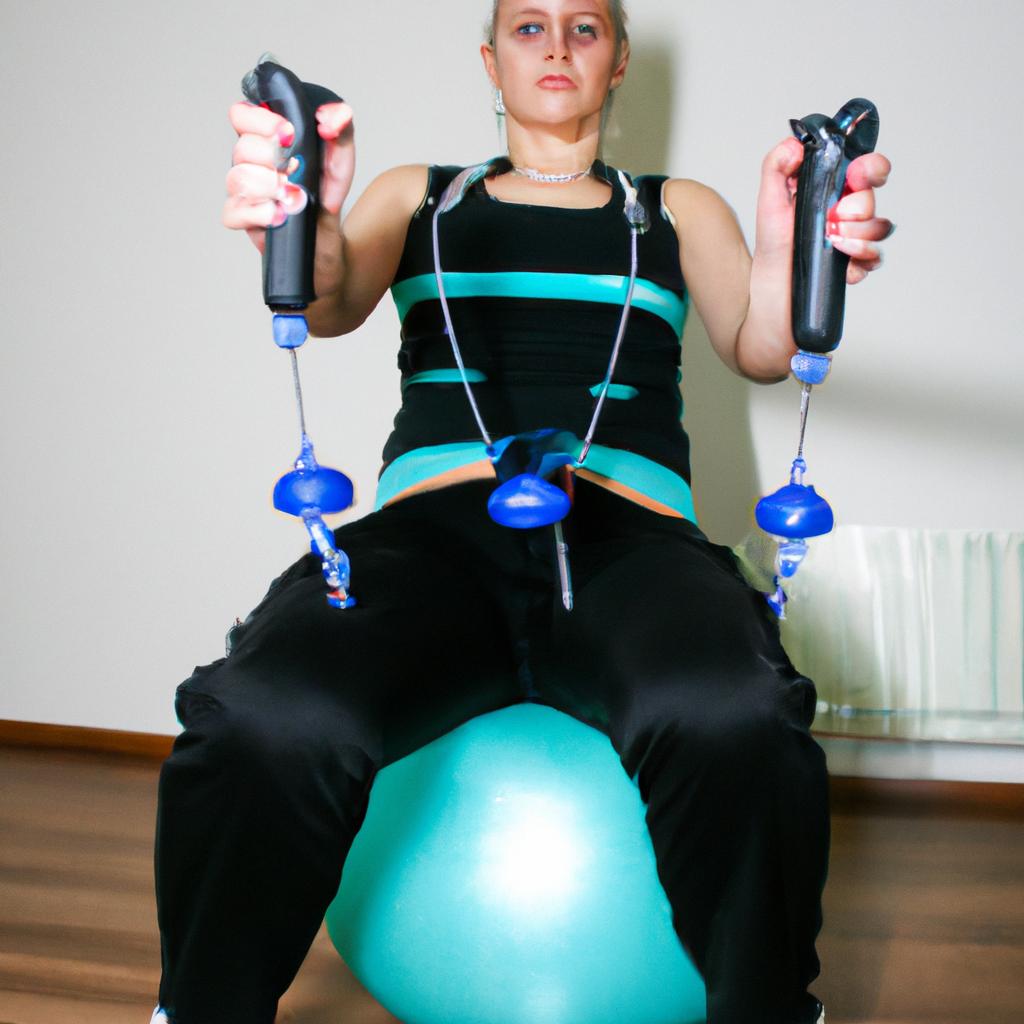In recent years, fitness events have emerged as a powerful tool for studio owners to enhance their success by securing funding for various initiatives. These events provide an avenue through which studios can attract sponsorships and partnerships, allowing them to expand their reach and improve the quality of their services. For instance, consider the case of Studio X, a small boutique fitness studio that was struggling to finance its expansion plans. By organizing a charity run event in collaboration with local businesses, Studio X not only raised substantial funds but also gained valuable exposure within the community. This example illustrates how fitness events serve as catalysts for growth and financial stability in the competitive landscape of the fitness industry.
Academic literature has increasingly recognized the pivotal role played by fitness events in bolstering studio success. Through these events, studios are able to tap into alternative sources of funding beyond traditional avenues such as loans or personal investments. Moreover, they create opportunities for networking and establishing connections with potential sponsors who share a common interest in promoting health and wellness. The ability to secure financial support from external partners enables studios to invest in state-of-the-art equipment, hire skilled instructors, offer specialized programs, and undertake marketing campaigns that would otherwise be financially burdensome. Thus, understanding the dynamics behind successful fitness events is crucial for studio owners who wish to thrive and expand in the competitive fitness industry.
By studying successful fitness events, studio owners can learn important strategies and best practices for organizing their own events. This includes understanding how to effectively partner with local businesses, attract sponsorships, promote the event through various marketing channels, and create engaging experiences for participants. Additionally, gaining insights into the planning and logistics of such events can help studio owners optimize resources and minimize costs.
Furthermore, understanding the impact that fitness events have on community engagement and brand exposure is essential. These events not only provide an opportunity for studios to give back to their communities but also allow them to showcase their expertise and unique offerings. Positive experiences at these events can generate word-of-mouth referrals and build a loyal customer base. Therefore, it is crucial for studio owners to analyze the impact of these events on their overall business growth and reputation.
In conclusion, recognizing the significance of fitness events as a catalyst for financial stability and growth in the fitness industry is vital for studio owners. By studying successful examples and understanding the dynamics behind these events, studio owners can enhance their chances of securing funding, expanding their reach, and improving the quality of their services.
The Power of Fitness Events
Imagine a local fitness studio struggling to attract new clients and increase revenue. Despite offering high-quality classes and services, the studio finds itself facing fierce competition from larger gyms in the area. However, by organizing fitness events, such as workshops or challenges, the studio can tap into a powerful tool that not only boosts its success but also creates a sense of community among participants.
Fitness events have proven to be highly effective in generating interest and engagement among individuals seeking to improve their physical well-being. These events offer an opportunity for people with similar goals and interests to come together and share experiences while pushing themselves towards achieving personal milestones. For instance, let’s consider a hypothetical case study where a small yoga studio organizes a weekend retreat focused on mindfulness and relaxation techniques. By providing attendees with expert instruction, serene surroundings, and opportunities for self-reflection, this event would likely draw individuals looking to deepen their practice and connect with like-minded individuals.
To further highlight the impact of fitness events, we present four key benefits:
- Motivation: Participating in fitness events often sparks renewed motivation within individuals who may have been feeling stagnant in their exercise routine.
- Community Building: Through shared experiences during these events, strong bonds are formed between participants which foster ongoing support networks beyond the initial event.
- Brand Awareness: Hosting successful events allows studios to showcase their expertise and unique offerings to potential customers who may then become regular patrons.
- Increased Revenue: Not only do fitness events create additional sources of income through registration fees or merchandise sales, but they also encourage repeat business as satisfied participants are more likely to continue attending regular classes at the studio.
In addition to these benefits, it is essential for fitness studios to carefully plan and execute their events. The table below presents three critical aspects that should be considered during the planning stage:
| Aspects | Description | Importance |
|---|---|---|
| Clear objectives | Define the purpose and goals of the fitness event. | High |
| Target audience | Identify the specific group the event aims to attract. | Medium |
| Marketing strategy | Develop an effective plan to promote and advertise the event. | High |
By strategically addressing these aspects, studios can ensure that their fitness events are well-organized, catered towards the right demographic, and effectively marketed to maximize participation.
Moving forward into the next section on “Strategies for Successful Fitness Event Planning,” we will explore practical steps that studios can take in order to deliver impactful events that not only benefit participants but also contribute to long-term success.
Strategies for Successful Fitness Event Planning
Transitioning from the power of fitness events, let us now delve into strategies that can be employed to ensure successful fitness event planning. To illustrate these strategies in action, consider the case study of a local fitness studio aiming to host a fundraising event to support their expansion plans. By implementing effective tactics, such as targeted marketing campaigns and fostering community engagement, they were able to maximize attendance and create an immersive experience for participants.
To begin with, one key strategy is the use of targeted marketing campaigns. These campaigns are designed to reach specific segments of the population who are more likely to be interested in attending fitness events. Through thorough market research and data analysis, the studio was able to identify potential attendees based on factors such as age group, location, and fitness preferences. This enabled them to tailor their promotional efforts towards those individuals most likely to engage with their brand and attend the event.
In addition to targeted marketing, fostering community engagement played a crucial role in driving attendance. The studio actively collaborated with local businesses and organizations aligned with their values, creating partnerships that benefited both parties involved. By offering incentives such as discounts or free trial classes at their facility for event attendees, they not only attracted more people but also strengthened relationships within the community. This sense of belonging fostered a positive emotional connection between participants and the studio, increasing the likelihood of repeat visits and long-term customer loyalty.
Furthermore, creating an immersive experience during the event itself greatly contributed to its success. An engaging atmosphere was cultivated through interactive activities like workout challenges or friendly competitions among attendees. Additionally, guest speakers or experts in various areas of fitness were invited to share knowledge and inspire participants. Such elements heightened excitement levels while simultaneously providing educational opportunities for attendees.
To evoke an emotional response:
- Participants experienced feelings of accomplishment when achieving personal bests during workout challenges.
- Attendees felt a sense of pride knowing their participation supported a worthy cause.
- The event created a vibrant and energetic ambiance, leaving participants feeling motivated and inspired.
- Engaging activities fostered a sense of camaraderie among attendees, creating lasting connections within the fitness community.
| Strategies for Maximizing Attendance and Engagement |
|---|
| 1. Targeted marketing campaigns |
| 2. Fostering community engagement |
| 3. Creating an immersive experience |
Transitioning into the subsequent section about maximizing attendance and engagement:
By implementing these strategies, the local fitness studio was able to not only attract a large turnout but also create a memorable experience for all participants. However, it is important to delve deeper into specific steps that can be taken to maximize attendance and further enhance participant engagement in fitness events.
Maximizing Attendance and Engagement
Planning and executing a successful fitness event requires careful strategizing to ensure maximum attendance and engagement. By implementing the following strategies, studio owners can boost their chances of success and enhance their overall studio performance.
One effective strategy is to diversify the event offerings. For example, incorporating various types of fitness classes such as yoga, Zumba, or Pilates can attract a wider audience with different interests and preferences. This diversity not only increases the potential attendee pool but also creates an inclusive atmosphere that encourages participants to try new activities.
To further engage attendees, it is crucial to create an immersive experience during the event. Providing interactive elements like live demonstrations, mini-workshops, or fitness challenges allows participants to actively participate rather than solely observe. Such experiential components foster a sense of community among attendees while motivating them to push their limits in achieving their fitness goals.
In addition to these strategies, effective promotion plays a vital role in maximizing attendance at fitness events. Utilizing digital marketing channels such as social media platforms, email newsletters, and targeted online advertisements helps reach a broader audience. Furthermore, partnering with local influencers or fitness enthusiasts who align with the studio’s brand values can significantly amplify promotional efforts.
To evoke an emotional response from the audience:
- Empower your attendees: Encourage them to embrace self-care through inspiring quotes displayed throughout the venue.
- Foster connection: Create opportunities for participants to connect with each other by organizing icebreaker activities or designated networking areas.
- Celebrate milestones: Recognize individual achievements during the event by awarding certificates or small prizes.
- Give back: Incorporate charitable aspects into the event by donating a portion of ticket sales or hosting fundraising initiatives.
- Feel empowered
- Experience camaraderie
- Achieve personal growth
- Make a difference in society
Table – Emotional Response:
| Emotion | Description | Example |
|---|---|---|
| Empowerment | Feeling of strength and self-confidence | Overcoming fitness challenges together |
| Camaraderie | Sense of belonging and connection | Participating in team-building activities or group workouts |
| Personal Growth | Progression and development on an individual level | Learning new techniques or achieving personal bests |
| Making a Difference | Contributing to a larger cause | Supporting charity initiatives through event participation |
By diversifying the event offerings, creating immersive experiences, and implementing effective promotion strategies, studio owners can cultivate successful fitness events that attract engaged attendees. However, collaborating with local businesses for sponsorship is another crucial aspect that ensures financial support and enhances the overall event experience.
Collaborating with Local Businesses for Sponsorship
Having discussed the strategies to maximize attendance and engagement in fitness events, it is crucial for studios to also explore opportunities for collaborating with local businesses as sponsors. By forming strategic partnerships, studios can not only secure additional funding but also benefit from increased exposure within the community.
Section 3: Collaborating with Local Businesses for Sponsorship
One example of a successful collaboration between a fitness studio and a local business is highlighted by FitCycle Studios and Green Life Market. FitCycle Studios, known for their high-intensity cycling classes, partnered with Green Life Market, an organic grocery store located nearby. This partnership allowed FitCycle Studios to offer exclusive discounts on organic produce to its members while promoting Green Life Market’s products during their events. As a result, both businesses experienced enhanced brand recognition and customer loyalty, ultimately leading to increased revenue.
To effectively collaborate with local businesses for sponsorship, here are some key considerations:
- Identifying potential partners: Look for local businesses that align with your studio’s mission and values. It could be health food stores, sports apparel shops, or wellness centers.
- Creating mutually beneficial arrangements: Develop sponsorship packages that provide value to both parties involved. Offer promotional opportunities such as logo placement at events or product samples in return for financial support.
- Building long-term relationships: Foster strong connections by regularly communicating with sponsors and finding ways to further promote their brand outside of events. Consider offering sponsor-specific perks like VIP access or dedicated social media shoutouts.
- Tracking success metrics: Establish clear goals for each collaboration and track relevant metrics such as event turnout rates or increased foot traffic at sponsor locations. These measurements will help evaluate the effectiveness of partnerships and make improvements when necessary.
Table showcasing different types of potential sponsors and the benefits they can bring:
| Sponsor Type | Benefits |
|---|---|
| Local restaurants | Provide healthy food options for event attendees |
| Fitness apparel stores | Offer discounts on workout attire or provide branded merchandise |
| Health and wellness centers | Collaborate on workshops or seminars related to fitness and well-being |
| Sports equipment suppliers | Donate equipment or offer exclusive deals on fitness gear |
Utilizing these strategies, studios can create win-win situations that enhance their financial stability while also offering added value to their members. By forging meaningful partnerships with local businesses, studios can tap into new customer bases and foster a sense of community within their events.
As studios explore sponsorship avenues to boost funding, it is equally important to utilize social media platforms effectively for event promotion.
Utilizing Social Media for Event Promotion
Collaborating with local businesses for sponsorship is just one avenue to explore when seeking funding for fitness events. Another effective strategy involves utilizing social media for event promotion, which can significantly boost studio success.
Consider a hypothetical scenario where a fitness studio in a small town wants to organize a community wellness fair. The studio decides to leverage its social media presence to create buzz and attract attendees. By strategically using platforms such as Facebook, Instagram, and Twitter, the studio can effectively spread the word about their upcoming event.
To maximize engagement and generate enthusiasm among potential attendees, here are some key tactics that can be employed:
- Creating visually appealing content: Share attractive images or videos related to the event theme. For instance, showcasing participants engaging in fun activities or interviews with experts can pique interest.
- Encouraging user-generated content: Inspire followers to share their own experiences or thoughts regarding fitness and wellness. This not only builds excitement but also promotes an interactive online community.
- Leveraging influencers: Collaborate with influential individuals within the fitness industry who have substantial followings on social media. Their endorsement of the event can significantly expand its reach and credibility.
- Utilizing hashtags: Develop unique and catchy hashtags specific to the event that users can include in their posts. This helps build momentum and creates a sense of unity among participants.
In addition to these strategies, incorporating emotional triggers through bullet points or tables can further captivate the audience’s attention:
- Reasons why attending the community wellness fair is beneficial:
- Opportunity to learn from health professionals
- Engage in physical activities suitable for all ages
- Free access to valuable resources like nutritional advice
- Chance to connect with like-minded individuals
| Increased motivation | Enhanced well-being | Strengthened community |
| Improved knowledge | Expanded network | Positive inspiration |
| Healthy competition | Personal empowerment | Fun and enjoyment |
By tapping into the emotional aspects of attending a fitness event, studios can elicit excitement and anticipation among their target audience. This can ultimately lead to increased attendance and contribute to overall studio success.
Transitioning seamlessly into the subsequent section about “Measuring the Impact of Fitness Events on Studio Success,” it is essential for studios to evaluate the outcomes and assess whether their efforts are yielding desirable results. By tracking metrics such as participant feedback, revenue generated from events, and post-event engagement levels, studios can gain valuable insights into the effectiveness of their initiatives.
Measuring the Impact of Fitness Events on Studio Success
Transitioning from the previous section, where we explored the utilization of social media for event promotion, it is crucial to assess the impact that fitness events have on studio success. This evaluation allows us to understand and quantify the benefits these events bring to studios in terms of financial gains, increased membership engagement, and overall brand image enhancement.
To illustrate this point, let’s consider a hypothetical case study featuring FitLife Studios. FitLife recently hosted a high-intensity boot camp event targeting individuals seeking an intense workout experience. Through diligent tracking and analysis, FitLife was able to measure several key metrics to evaluate the effectiveness of their fitness event:
- Increased Revenue: The boot camp event resulted in a significant boost in revenue for FitLife Studios. Attendees not only paid for participation but also purchased additional packages or memberships after experiencing the studio firsthand.
- Membership Retention: By analyzing post-event data, FitLife identified a higher retention rate among participants who attended the boot camp compared to non-participants. This suggests that fitness events contribute positively towards member loyalty and continued engagement with the studio.
- Social Media Engagement: FitLife observed a surge in social media interactions during and after the boot camp event. Participants shared their experiences online, generating buzz around FitLife Studios and attracting new potential members.
- Brand Recognition: Hosting successful fitness events helps establish FitLife as an industry leader within its community. Word-of-mouth recommendations following such events increase brand recognition and attract more clientele.
Exemplifying some key findings from our hypothetical case study, we can conclude that measuring the impact of fitness events provides valuable insights into studio success. To further comprehend this phenomenon, we present a table summarizing various aspects measured by studios when evaluating their fitness events’ influence:
| Metrics | Description |
|---|---|
| Attendance | Number of participants attending the fitness event |
| Revenue Generation | Financial gains from event registration fees, merchandise sales, and additional purchases made by attendees |
| Member Retention | Percentage of participants who continue their membership after attending the event |
| Social Media Engagement | Interactions (likes, comments, shares) on social media platforms related to the event |
By employing these metrics and analyzing the resulting data, studios gain a comprehensive understanding of how fitness events impact their overall success. This information enables them to make informed decisions regarding future event planning, marketing strategies, and resource allocation.
In conclusion, evaluating the influence of fitness events is vital for studios seeking sustained growth and prosperity. By tracking key metrics such as revenue generation, member retention rates, social media engagement levels, and brand recognition improvement, studios can assess the tangible benefits that these events provide. Armed with this knowledge, studio owners can optimize their event strategies to enhance their overall success in the competitive fitness industry.




